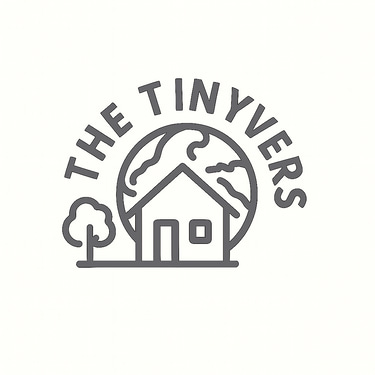Zoning & Permit Basics
2. File Storage
You’ll have several types of files:
Videos → Host on YouTube (unlisted) or Vimeo if you want better privacy controls.
PDFs, Worksheets, Checklists → Store on your site’s media library or in a public Google Drive/Dropbox folder with view-only links.
Slides → Upload as PDF or embed via Google Slides.
3. Page Layout on The Tinyvers
Create a dedicated subpage under Learn:
Learn → Mini-Courses & Lessons → Zoning & Permit Basics
Page Structure:
Hero Section – Course title, short summary, course image/banner.
Lesson Previews – Clickable cards for each module.
Downloads Section – Checklists, templates, worksheets.
Sign-Up Gate (optional) – Form to unlock videos & downloads.
Related Courses – Links to other Tinyvers courses.
4. How to Organize Lessons
You can either:
Put all modules on one long scrolling page (good for quick reading, but less “official” course feel).
Make separate lesson pages for each module (better for tracking engagement, more SEO opportunities).
💡 I’d suggest separate pages for each module so Google can index “Module 1 – Zoning Laws Explained,” “Module 2 – How to Research Zoning Maps,” etc.
5. Download Delivery
If you want downloads (checklists, templates) to be an incentive:
Before sign-up: Show a blurred or locked download button.
After sign-up: Show the live link (Google Drive, Dropbox, or direct file link).
6. Cross-Promotion
Once live, you can:
Add it to your homepage under “Featured Lessons.”
Promote it on social media & email newsletter.
Offer it as a free mini-course on platforms like Udemy or Skillshare to funnel people back to The Tinyvers for more content.


Bridgewater Joy Residence
Co-designed by the world-renowned architect James Smith, our Bridgewater Joy residences offer top views of the nearby lake Michigan. Perfect for a small family, a professional couple, or anyone looking to set up a home office.
Zoning & Permit Basics
Understand the legal side of tiny living so your build is safe, compliant, and stress-free.
Course Overview
This course breaks down zoning laws, building codes, and permit requirements for tiny homes, van conversions, and alternative housing. You’ll learn how to navigate local regulations, avoid costly mistakes, and find creative solutions when rules seem restrictive.
By the end, you’ll be able to research, plan, and secure the approvals you need — or know your safe workarounds if building “outside the system.”
Target Audience
Future tiny homeowners and vanlifers
People relocating across states or countries
DIY builders who want to stay legal
Community leaders planning tiny house villages
Anyone facing zoning or permit confusion
Learning Objectives
By completing this course, you will:
Understand the difference between zoning laws and building codes.
Know how to find and interpret local zoning maps.
Identify permit requirements for both stationary and mobile dwellings.
Understand special exceptions and variances.
Learn common “gray areas” and how people navigate them.
Create a step-by-step permit application plan.
Course Modules
Module 1 — What Is Zoning and Why It Matters
Definition of zoning laws and building codes.
Why zoning exists (public safety, land use control, community planning).
How zoning impacts tiny homes and mobile living.
Activity: Identify your property type on a sample zoning map.
Module 2 — How to Research Your Local Zoning Laws
Where to find zoning maps and code documents.
How to read zoning codes (R-1, R-2, agricultural, commercial, mixed-use).
Local government departments to contact.
Download: Zoning Research Worksheet.
Module 3 — Permits: When You Need Them and When You Don’t
Common permit types (building, electrical, plumbing, occupancy).
Mobile vs. stationary homes — how requirements differ.
Temporary dwelling permits & RV classifications.
Case Study: How one vanlifer legally parked in a residential zone for 6 months.
Module 4 — Navigating the Application Process
Steps for submitting a permit request.
What documents and drawings you’ll need.
Expected timelines and fees.
Common reasons for permit rejection — and how to avoid them.
Template: Sample permit request letter.
Module 5 — Legal Loopholes & Creative Solutions
Accessory Dwelling Units (ADUs).
Agricultural zoning exemptions.
Tiny home communities and cooperative zoning models.
Parking on private land with owner consent.
Activity: Match your project to the most viable legal path.
Module 6 — Action Plan & Next Steps
How to prepare a “Zoning & Permit Checklist” for your project.
Building relationships with zoning officials.
When to get professional help (architects, zoning attorneys).
Download: Zoning & Permit Checklist PDF.
Course Format
Videos: 5–8 minute lessons per module.
PDFs: Worksheets, templates, and checklists.
Quizzes: Quick knowledge checks after each module.
Case Studies: Real-world success stories.
Final Project
Research the zoning laws in your target location, identify your property’s zoning type, and outline the permits you would need to live there legally.
Additional Resources
Links to U.S. zoning maps by state.
International zoning comparison for nomads.
Contact list of helpful government departments.


Pleasantview Gem Inn
Not just pleasant on the outside, our Pleasantview Gem Inn properties are especially popular among families. With underground parking and floor-to-ceiling windows, there's no shortage of natural light or space.


